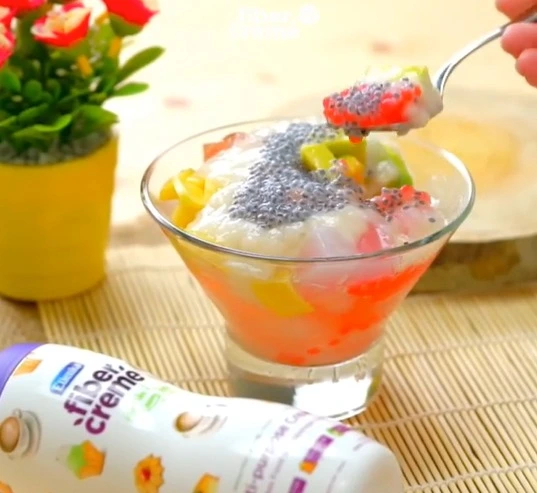 Perfect garlic peanuts are not just about the right taste. The texture also has to be good—crispy but not too hard. Having trouble getting this kind of texture? Here, Minchef shares the reasons why garlic peanuts aren’t crispy, so you can avoid them.
Perfect garlic peanuts are not just about the right taste. The texture also has to be good—crispy but not too hard. Having trouble getting this kind of texture? Here, Minchef shares the reasons why garlic peanuts aren’t crispy, so you can avoid them.
Causes of Garlic Peanuts Aren’t Crispy
 Garlic peanuts that are not crispy can be caused by several factors during the preparation process, including ingredients, frying techniques, and storage methods. Here are some causes of garlic peanuts aren’t crispy:
Garlic peanuts that are not crispy can be caused by several factors during the preparation process, including ingredients, frying techniques, and storage methods. Here are some causes of garlic peanuts aren’t crispy:
1. Incorrect Frying Temperature
Frying temperature plays a crucial role in achieving crispy garlic peanuts. A temperature that’s too low (below 150°C/302°F) causes the peanuts to absorb excess oil, resulting in a soggy texture. Too much oil saturates the peanuts, leaving them limp and devoid of their desired crunch. Conversely, an excessively high temperature (above 180°C/356°F) leads to burnt exteriors while the insides remain undercooked and soft. This results in peanuts that are hard and burnt, not crispy.
2. Using the Wrong Oil
Reusing oil, especially oil that has been used to fry other foods, can negatively impact the crispiness of your garlic peanuts and may even cause them to go rancid quickly. Residual food particles and flavors from previous frying sessions can cling to the peanuts, affecting both their taste and texture. Additionally, certain oils, like olive oil, are less suitable for deep-frying large batches of peanuts due to their lower smoke points. Opt for oils with higher smoke points, such as coconut oil or peanut oil, for better results.
3. Stale Peanuts
 Peanuts that have been stored for too long or exposed to humid air will lose their crispness. Oxygen and moisture in the air cause the peanuts to become soft and tough. Ensure you purchase fresh, high-quality peanuts. Check the expiration date and choose peanuts that are whole, unwrinkled, and free from any musty odor. Store your peanuts in a cool, dry place before use.
Peanuts that have been stored for too long or exposed to humid air will lose their crispness. Oxygen and moisture in the air cause the peanuts to become soft and tough. Ensure you purchase fresh, high-quality peanuts. Check the expiration date and choose peanuts that are whole, unwrinkled, and free from any musty odor. Store your peanuts in a cool, dry place before use.
4. Insufficient Oil Draining
Residual oil left on the garlic peanuts after frying contributes to sogginess. Immediately after removing them from the hot oil, drain the peanuts thoroughly using a wire mesh strainer or thick paper towels. Spread the peanuts out on the strainer or paper towels to allow excess oil to be absorbed effectively. Avoid piling the peanuts too high to ensure proper draining.
5. Improper Storage
Once cooled, store your garlic peanuts in an airtight container to maintain their crispness. This prevents air and moisture from entering, helping them stay crunchy longer. Avoid storing them in humid environments or under direct sunlight. Humidity and heat accelerate the softening process.
Read More : How to Fry Garlic Peanuts That Are Crispy and Long-Lasting
Minchef’s Secret to Even More Delicious Peanuts
 Those are some reasons why garlic peanuts don’t stay crispy that you need to watch out for. By choosing the right ingredients, frying at the right temperature, and storing them properly, you can enjoy garlic peanuts that are always crispy and savory.
Those are some reasons why garlic peanuts don’t stay crispy that you need to watch out for. By choosing the right ingredients, frying at the right temperature, and storing them properly, you can enjoy garlic peanuts that are always crispy and savory.
Now, if you want to enhance the umami flavor, try soaking the peanuts in coconut milk before frying. Besides adding flavor, coconut milk also softens the peanuts so they’re not too hard when fried. But if you have trouble finding coconut milk or are looking for an alternative, you can try soaking the peanuts in a FiberCreme solution. Not only does FiberCreme taste as good as coconut milk, but it’s also high in fiber and contains 0mg cholesterol. Plus, FiberCreme is perfect for replacing coconut milk in various Eid dishes, from curry and opor to rendang.
Looking for more #TastyCanBeHealthy recipes using FiberCreme? Check out and follow @FiberCreme_TV on Instagram!






0 Comments